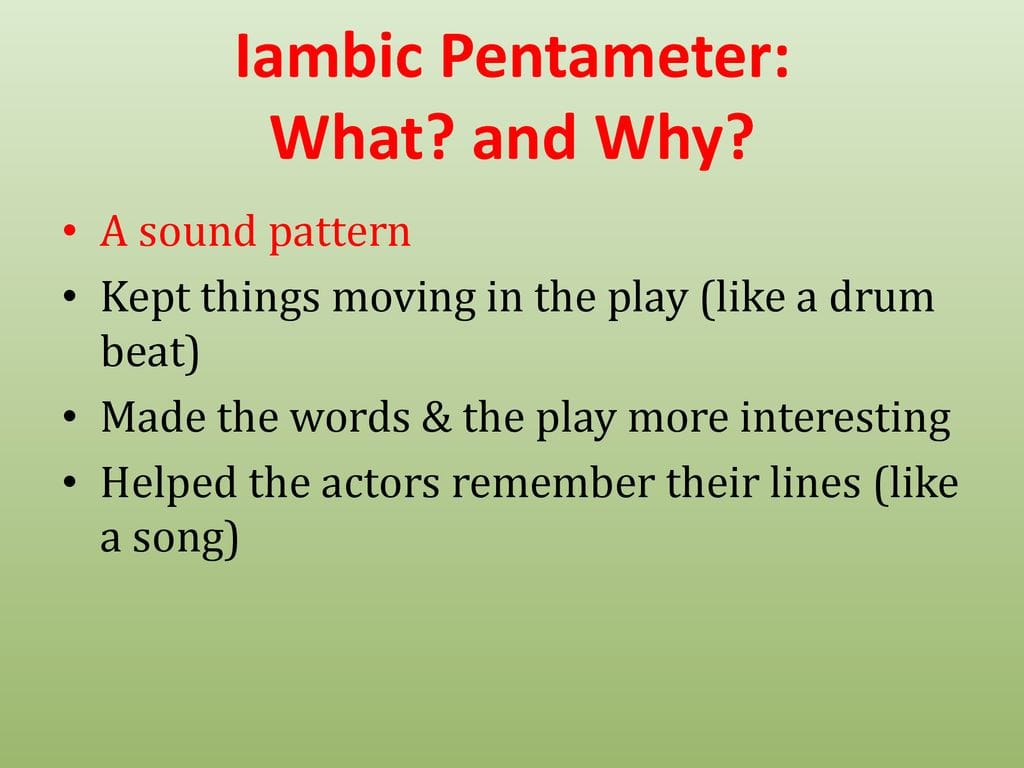Deconstructing verse: uncover the secrets of iambic pentameter with our comprehensive guide and practical tools. From Shakespeare to song lyrics, explore the power and versatility of this rhythmic pattern across diverse literary forms. Perfect your poetry: learn to identify, analyze, and even generate iambic pentameter with ease.
What is Iambic Pentameter?
Iambic pentameter is a rhythm scheme in poetry. Think of it as a heartbeat—a rhythmic pulse that gives a line its flow. This pulse comes from five “iambs,” which are metrical feet. An iamb is a pair of syllables: an unstressed syllable (da) followed by a stressed syllable (DUM). Put five together, and you get a ten-syllable line with a distinctive da-DUM, da-DUM, da-DUM, da-DUM, da-DUM rhythm.
Hearing the Beat: Identifying Iambic Pentameter
Want to feel the rhythm? Here’s a step-by-step guide:
Count the Syllables: Read the line aloud, naturally. Ten syllables suggest iambic pentameter. Fewer or more, and it’s likely something else.
Find the Stress: In each word, where does the emphasis fall? Mark stressed syllables with a
/and unstressed with anx. You’re looking for that x / pattern—the iamb.Read Aloud (Again!): This is key. Speaking the line reveals the iambic pattern. Can you hear that heartbeat? It might not be perfect—poets often play with rhythm for effect—but the general pattern should emerge.
Online Checkers: Several online iambic pentameter checkers (JavaScript-based checkers, for example) can analyze text and identify stress patterns, simplifying the process, especially when starting out.
The Rules of Iambic Pentameter
Iambic pentameter isn’t just about counting to ten. Here’s the breakdown:
Ten Syllables: Each line must contain ten syllables. This is the foundation.
Iambic Pattern: Syllables alternate: unstressed, stressed, unstressed, stressed… creating that da-DUM rhythm.
Five Iambs: Five iambs make up a line of iambic pentameter. This creates the rhythmic consistency.
Let’s take Shakespeare’s famous line, “Shall I compare thee to a summer’s day?”:
| Shall | I | com- | pare | thee | to | a | sum- | mer’s | day? |
|---|---|---|---|---|---|---|---|---|---|
| x | / | x | / | x | / | x | / | x | / |
Notice the alternating pattern—classic iambic pentameter.
Variations on the Theme
Language is fluid. Poets often use variations for emphasis or mood:
Inverted Iamb: Sometimes, the stress pattern flips (/ x), adding a different feel.
Feminine Ending: An extra unstressed syllable at the end softens the line.
Caesura: A pause (often marked by punctuation) within the line creates a dramatic break.
These deviations add complexity, but the basic iambic pattern usually remains recognizable.
Checking for Iambic Pentameter: A Practical Guide
Here’s how to analyze a line:
Count Syllables: Ten syllables are the starting point. Use your fingers if it helps.
Mark the Stress: Identify the natural emphasis in each word, using / for stressed and x for unstressed syllables. Look for the x / iambic pattern.
Read Aloud: Does it sound like a heartbeat, that da-DUM rhythm? Reading aloud often reveals the underlying pattern. This is probably the most reliable way to check.
Online Tools (Wisely): Online checkers are handy but not foolproof. They can’t grasp the nuances of language like a human ear can. Use them as a guide, not the final word. Many free checkers are available online.
Deeper Dive into Iambic Pentameter
While “da-DUM” is a good starting point, stresses in spoken English are often subtle. Context and meaning can influence stress, adding another layer to poetic analysis. Ongoing research suggests even our understanding of stress patterns changes over time. There is debate about how strictly a line must adhere to the da-DUM pattern to be considered “true” iambic pentameter. Different linguistic approaches may also lead to varying interpretations of stress.
Beyond the Bard: Iambic Pentameter in Action
Iambic pentameter isn’t confined to Shakespeare. It’s in song lyrics, advertising slogans, even modern poetry. It resonates because it reflects the natural rhythms of spoken English.
Why Does Iambic Pentameter Matter?
Understanding iambic pentameter opens up a world of literary appreciation. It helps us understand the rhythm and flow of poetry, from the classics to contemporary works. It allows us to appreciate the skill of poets like Shakespeare, who used iambic pentameter masterfully. It even helps understand how modern songwriters employ rhythmic patterns in their lyrics. To better understand the nuances of written and spoken language, delve into the fascinating field of linguistics. And for a fun twist, try creating your own humorous stories with a Mad Libs maker.
Try Your Hand: Writing Iambic Pentameter
Now, try writing your own iambic pentameter! It can be challenging, but start by imitating the rhythm of your favorite poems. Don’t be afraid to experiment. Online tools can help you analyze your lines and refine your rhythm.
Ultimately, understanding iambic pentameter is about appreciating the music of words. Have fun exploring!
- Unlock Elemental 2 Secrets: Actionable Insights Now - April 2, 2025
- Lot’s Wife’s Name: Unveiling the Mystery of Sodom’s Fall - April 2, 2025
- Photocell Sensors: A Complete Guide for Selection and Implementation - April 2, 2025
















